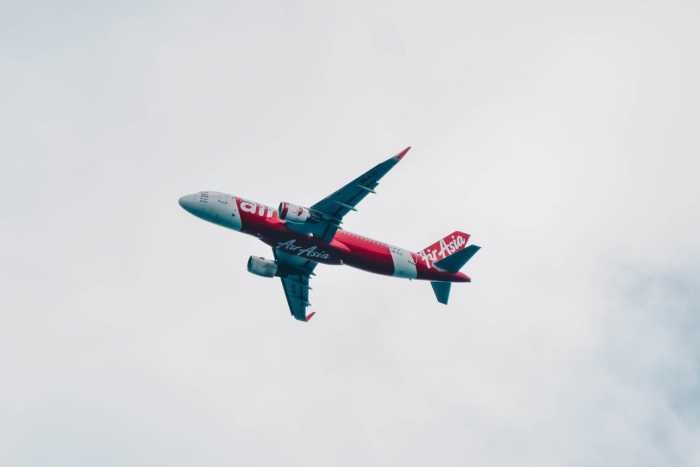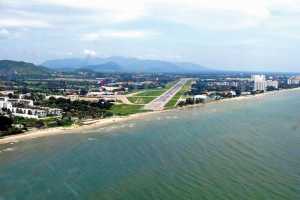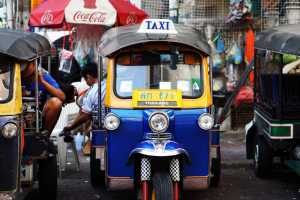
Phuket Airport's Five Year Plan
15th Dec 2010

The Thai cabinet's approval in principle of a five year plan (2009-2013) for the development of Phuket International Airport is a welcome commitment toward growing this vital cog in Phuket's tourism wheel.
Without an efficient airport to handle the increasing number of airlines flying directly to Phuket the island could quickly lose out to competitors like Bali, which is closer to major markets like Australia. Phuket's success as a tourist destination has been built on the back of the aeroplane.
Consider that in 2009 Thai Airways announced direct flights from Hong Kong; the tiny Happy Air took to the air; Fire Fly, a subsidiary of Malaysian Airlines came back into the Phuket market; V-Australia, an offshoot of Virgin Blue from Australia started direct flights; Air Asia continued to expand its network into Phuket, including designating it the second Thailand hub and Jetstar from Australia announced an alliance with Air Asia that will certainly add to frequencies and choice for the traveler.
The 5.7 billion THB makeover of PIA by the Airports Authority of Thailand was announced well over a year ago but the approval only came through in December. In the meantime, however, it is evident that the AOT has not waited around for this approval and there are noticeable improvements going on at the airport. In the future it will be vital that the makeover goes as much into basic infrastructural projects, such as ensuring efficient safety and security standards, more immigration facilities, low cost carrier facilities, improving car parking and creating an environment within the terminals themselves that is comfortable and efficient.
There is a worldwide trend amongst airlines to focus on improving the ground services they offer given that transiting and embarking and disembarking from airports today can be stressful and time consuming, not to say downright embarrassing and insulting because of the stricter and stricter security measures, that something must be done to compensate.
For the transiting and disembarking passenger, in particular, this should include shops and services at reasonable prices, not some of the outrageously high gouging prices almost universal in airports around the world; free internet, amusement areas for the children, good lounges and, above all, staff who are willing to help. Thailand has an advantage in the latter department, although better training is still required to improve customer service of some of the concessions you encounter here.
This year the airport is expected to handle around 6.8 million visitors with the AOT aiming for 12.8 visitors by 2018. This is a realistic target given the continued expansion of air traffic into the island. One facility that will not be expanded is the runway, at least not yet. It can comfortably handle a fully laden Boeing 747 Jumbo jet. The only down side is the placement of the runway alongside an ocean strip that can project some nasty squalls and winds across the runway from time to time.
PIA is amongst the unranked airports in the Skytrax annual survey of airports. But this does not necessarily reflect its quality, more its small size. Most objective observers, would, however, concede that PIA still has got some way to go to meet satisfactory levels of service that a majority of passengers would fully appreciate.
But there has to be optimism, merely because it is located in Asia, home to the best five star (Skytrax ranked) airports in the world in Incheon, Seoul, South Korea; Hong Kong and Singapore. Suvarnabhumi International Airport in Bangkok is ranked three stars, but it, too, has made considerable progress in improving many basic facilities that were lacking before because of its grossly premature opening which saw the airport totally unprepared to handle around 43 million passengers a year with a maximum capacity of 45 million. The government is also considering doubling this, which will be needed in future years.
Just for the record, Skyscanner flight search, an internet portal that covers the aviation industry lists the airlines that fly to Phuket are (direct, through code-shares with other airlines or alliance partners and charters. This excludes private aircraft) Thai Airways, Thai AirAsia, Malaysian Airlines, SilkAir, Singapore Airlines, Korean Air, China Southern, Asian Airlines, Air Berlin, Transaero Airlines, Cathay Pacific, Finnair, Dragonair, Shanghai Airlines, Condor, Jetstar, V Australia, China Airlines, Tiger Airways, Ethiad Airways, Lufthansa, Air Canada, Austrian Airlines, SAS, ANA, SkyStar Airways, Gulf Air, Virgin Blue, Air France, Firefly, United Airlines, Air New Zealand., TUifly, Qantas, Caribbean Star and Blu-express.









